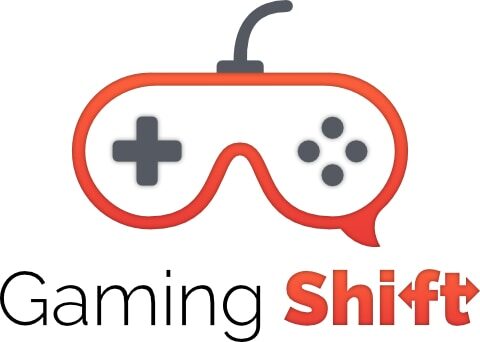At just 5.9” x 6.3” x 4.3”, the GameCube is a very compact console. One of the smallest full-size consoles ever built, and the smallest of the 6th generation. To complement its tiny form factor, Nintendo went with a mini DVD disc format that could store up to 1.46B of data.
Why are Gamecube discs so small? One benefit cited by Nintendo back then was the prevention of piracy. There is no way to verify the authenticity of this claim, but the console form factor could be shrunk because it used discs that measured just 8cm across.
Most issues with fitting a console on your desk come from its footprint, which is measured by multiplying the width and depth. The GameCube was just as tall as the PS2 or Xbox, but its width and depth came in at a fraction of the rival consoles. This allowed it to fit comfortably on small desks and shelves, while the understated design didn’t draw too much attention.
Why Are Gamecube Discs So Small?
There is no real benefit to making smaller discs other than designing a smaller console based on the disc size. Some people theorize that Nintendo went with mini DVDs to reduce the seek time and improve loading speeds. However, according to this AnandTech article, the original Xbox had a faster reading speed despite using regular DVDs.
While the Xbox drive managed anywhere between 2.5MB/s to 6.25MB/s, the GameCube drive maxed out at just 3.125MB/s. Still, this wasn’t an issue because game assets and worlds were comparatively smaller in Nintendo games. As a result, there wasn’t a noticeable difference in loading times between the GameCube and other consoles of that generation.
Yes, using mini DVDs does make games harder to pirate because the format is rarer than regular DVDs. Plus, certain DVD drives back then couldn’t read this format. So you’d have a hard time ripping the game files and making an ISO.
However, Nintendo had to pay a price for using a smaller disc. And that price was storage capacity. While the Xbox and PS2 discs could hold up to 8.5GB of data, the GameCube discs couldn’t go beyond 1.5GB.
This proved to be of minor consequence because very few 3rd party developers made games for GameCube. And Nintendo was never interested in DVD playback, unlike Sony and Microsoft.
Are GameCube Discs Durable?
No more than a regular DVD, but they are relatively resilient to scratches on the label side. Most discs have their metal data layer closer to the top, with a very thin lacquer/ polycarbonate coating to protect the data. That’s why you should place your discs label-side up and use special disc marker pens to write on the top side.
However, GameCube discs are reported to have a metal layer that’s shifted more toward the bottom side. One design flaw with the GameCube is the exposed laser in its disc drive, which can get dirty quite easily. Otherwise, the console is built tough and can take a fall like a champ.
Did The GameCube Have 16:9?
Only certain games supported a 16:9 aspect ratio, as it was still quite new back in the early 2000s. Gamers were playing on CRT televisions, which used a 4:3 aspect ratio for the most part. Sure, there were some widescreen TVs but these were few and far between.
A good test is to get a game that supports widescreen and look at a circular object within the game. If switching to 16:9 distorts it, you’re better off going with 4:3 and enduring the black bars on either side. The GameCube outputs video in 480i across all NTSC regions and 576i in PAL regions.
But if you want 480p, you’ll need the DOL-001 model. This is the only GameCube version with a digital A/V port, which was removed from later revisions. And you must connect a component cable to get 480p output.
What FPS Did GameCube Run At?
As is the case with most consoles back in the analog days, 60FPS was the norm rather than an exception. Some games like Super Mario Sunshine were locked to 30FPS, but these were the exceptions. Big titles like Tales of Symphonia, Metroid Prime, TimeSplitters, etc. ran at a smooth 60fps.
How Much RAM Do I Need To Emulate My GameCube?
Dolphin is the best GameCube emulator and the only one you should download. It supports the widest range of GameCube games and delivers the best performance. You need just 2GB of RAM to emulate GameCube games on a modern system, using the Dolphin emulator.
How Many GB Is A GameCube Game?
The mini DVD format used by Nintendo couldn’t go beyond 1.46GB, so that was the maximum size for a GameCube game. Generally speaking, GameCube games were 1.2GB or less in size. A massive step up from the 64MB limit of the Nintendo 64 cartridge.
Conclusion
I hope this article helped you understand why GameCube discs are so small. It comes down to Nintendo wanting a small console and trying to do something different from everyone else. When Sony was using CDs, Nintendo chose cartridges.
This got them into a lot of trouble with 3rd party developers, who found it difficult to work with the N64’s 64MB game size limit. But Nintendo didn’t care, because once they decide on an idea they stick with it.
The GameCube could fit larger games. But it was at a disadvantage compared to the PS2 and Xbox, both of which used full-size DVDs.
